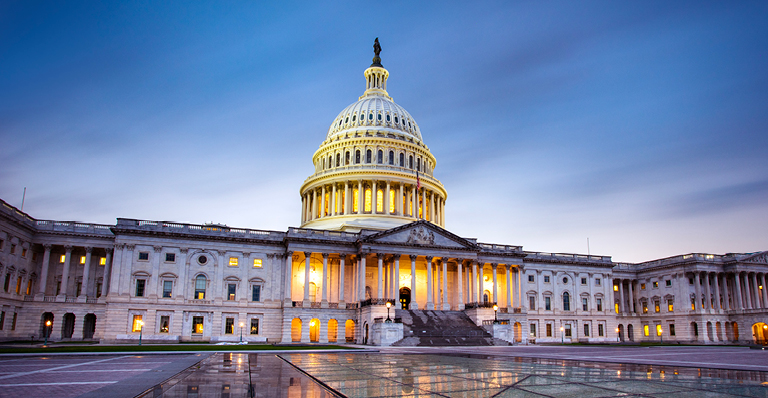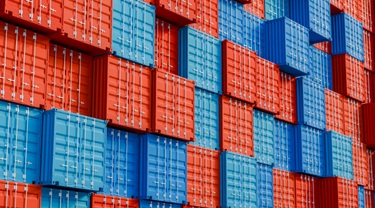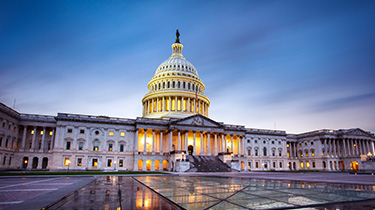With global trade shifting rapidly, Canadian exporters face growing uncertainty. At Export Development Canada (EDC), we’re here to help businesses adapt, plan ahead and stay competitive.
In March, the federal government announced $6.5 billion in support for companies impacted by the U.S tariffs on Canadian goods. This includes the launch of EDC’s Trade Impact Program (TIP), which will facilitate up to $5 billion in financing and insurance over two years to help eligible exporters manage economic pressures and explore new markets.
Understanding the Canada-United States trade environment is more important than ever. Here’s the latest:
Canada-U.S. tariffs
- Most Canadian exports to the U.S. remain tariff-free if they meet Canada-United States-Mexico Agreement (CUSMA) rules of origin
- Canada faces a 35% tariff on non-CUSMA goods
New U.S. tariffs introduced on Oct. 14 include:
- 10% on softwood lumber
- 25% on certain upholstered wood products
- Small shipments less than US$800 are no longer exempt from U.S. duties
Global tariff landscape
- On April 5, the U.S. introduced a baseline 10% reciprocal tariff on all imports, later replaced by country-specific rates ranging from 15% to 50%, depending on trade relationships
- India is subject to 50% tariffs due to Russian oil imports
- China faces tariffs up to 145%, with a 125% retaliation on U.S. goods
These tariffs remain in effect, though some countries have negotiated reductions through bilateral agreements.
To stay informed on evolving U.S. tariffs and their impact on Canadian exporters, explore EDC’s U.S. market intelligence page for timely insights and strategic guidance.
You should also check out
Insights and analysis from EDC on navigating the U.S. business environment
Tariffs are disrupting global supply chains and driving up costs for Canadian and American consumers. According to EDC Economics, the measures are impacting Canada’s economy by reducing trade volumes and contributing to job losses. Statistics Canada reported in October that the national unemployment rate is at its highest point in more than four years at 7.1%.
EDC senior economist Prince Owusu says the jobless rate is likely to remain elevated as Canadian products become uncompetitive in the U.S. market.
“Businesses are placing their investment plans on hold or cancelling them all together. We’ve seen this in sectors like autos where some companies have decided to drastically shift their operations in order to mitigate the impact of tariffs,” says Owusu.
Key sectors impacted include:
Agriculture and agri-food
U.S.: This sector remains highly vulnerable to future trade actions due to its integration with the U.S. market. As of Oct. 15, no Canadian agricultural products—aside from potash—face confirmed U.S. tariffs.
China: In March, following Canada’s 100% tariff on electric vehicles from China, China imposed retaliatory tariffs on Canadian goods:
- 100% on canola oil, oilseed meal and peas
- 25% on seafood and pork products
These tariffs remain in effect as of October.
Automotive
- The U.S. maintains a 25% tariff on finished vehicles. CUSMA-compliant vehicles are exempt, but non-American components still face duties.
- Canada has removed most tariffs on U.S. autos, though disputes persist.
- On Oct. 13, Stellantis announced it would shift production out of Brampton, ON, investing US$13 billion to expand operations in the U.S.
Construction
Tariffs on steel, aluminum and lumber are increasing costs and delaying projects.
Energy and critical minerals
The U.S. has imposed:
- 10% tariff on Canadian energy products and potash
- 35% tariff on non-energy Canadian goods
- 40% transshipment tariff for goods rerouted to evade duties
Steel and aluminum
U.S. steel and aluminum tariffs increased from 25% to 50% in June, affecting raw materials and products such as dishwashers and refrigerators.
- On Oct. 15, Canada granted tariff relief on select U.S. and Chinese steel and aluminum imports to support domestic industries.
- A recent amendment to the 2024 surtax remission order allows duty-free entry of certain U.S. and Chinese metals not manufactured in Canada.
Copper
A 50% tariff was imposed starting Aug. 1. Raw materials are exempt.
Furniture and cabinetry
New tariffs on upholstered wood products and kitchen/bathroom cabinets are affecting Canadian manufacturers:
- 25% tariff effective Oct. 14
- Increasing to 30% and 50% in 2026 depending on product category and trade agreement status
Lumber
The U.S. has imposed:
- 10% tariff on softwood lumber and timber
- Countervailing and anti-dumping duties on Canadian lumber increased from 14.5% to 35%, with total tariffs reaching 45%
- Canada hasn’t imposed broad counter-tariffs on U.S. lumber but is considering targeted retaliation.
Manufacturing
Machinery, electronics and consumer goods sectors are facing higher costs for raw materials and components, reducing production efficiency and increasing prices.
Why is the U.S. imposing tariffs?
The U.S. administration cites tariffs as a tool to:
- Protect domestic jobs
- Encourage consumption of American-made goods
- Boost manufacturing
However, the U.S response has introduced significant uncertainty and disruption across global supply chains.
Canada-United States trade snapshot
In 2023, bilateral trade between Canada and the U.S. exceeded $1.3 trillion, with $3.5 billion in goods and services crossing the border daily. Since 2015, trade has grown by more than $400 billion, driven by shared efforts to deepen economic ties.
Today, exporters face new challenges. Staying informed on trade policy changes, exploring tariff mitigation strategies and diversifying into global markets are more critical than ever.
To help Canadian exporters navigate this landscape, we’ve compiled answers to the most frequently asked questions from customers. These insights aim to provide clarity and actionable guidance.
Looking for deeper insights on managing trade and tariff risks?
Watch EDC’s Global Economic Outlook webinar for expert perspectives on navigating economic volatility, sector-specific challenges and global market trends.
1. What’s a tariff?
A tariff is a tax imposed by a government on goods imported from another country. Like a sales tax, it increases the cost of imported items and can affect both the price of goods you bring in and the competitiveness of your exports. Unlike import duties, which are based on product-specific factors like origin, purpose, weight or value, tariffs are broader and often used to protect domestic industries from foreign competition. In Canada, tariffs are collected by the Canada Border Services Agency (CBSA) at the time goods are imported.
2. What is Canada’s current tariff strategy?
As of Sept. 1, Canada removed most of its 25% counter-tariffs on U.S. goods—specifically for products that are CUSMA-compliant. Counter-tariffs on steel, aluminum and select automotive products remain in effect. This reflects a shift toward sector-specific negotiations and a broader strategy of market diversification.
It's important to note that counter-tariffs don’t apply to goods that meet the CUSMA rules of origin—that is, products that qualify as originating from Canada, the U.S. or Mexico under CUSMA.
Visit the Government of Canada’s countermeasure page for the complete list of U.S. products subject to Canadian counter-tariffs.
The federal government’s U.S. tariff support for Canadian businesses and workers outlines a wide range of economic supports, tools and programs. These include the Duties Relief Program, Duty Drawback Program, tax deferrals and strategic funding for industries and regions affected by U.S. tariffs.
3. How do I know if I’ll have to pay tariffs?
To determine if your product is subject to tariffs, Canadian exporters can use tools like:
- Canada Tariff Finder
- Tariff Tracker
- Canada-U.S. Trade Tracker from the Canadian Chamber of Commerce Business Data Lab
Understanding your product’s Harmonized System (HS) code and the applicable rules of origin is essential. These determine whether your goods qualify for preferential treatment under trade agreements—like CUSMA—which can exempt eligible Canadian exports from U.S. tariffs.
4. Where can I get help understanding CUSMA compliance?
Understanding CUSMA requirements helps Canadian exporters avoid tariffs, ensure compliance and build resilience in uncertain markets.
For support:
- Contact the Trade Commissioner Service (TCS) for guidance on trade agreements, tariffs, sanctions and CUSMA compliance.
- Call the TCS support line at 1-833-760-1167 for help with rules of origin, exporter eligibility and documentation.
- Read EDC’s article Complying with CUSMA: What Canadian exporters, importers need to know.
5. How do I comply with CUSMA rules of origin and claim tariff benefits?
To qualify for preferential tariff treatment under CUSMA:
- Identify your product’s HS code
- Confirm your product qualifies under product-specific rules of origin
- Complete a certification of origin (can be included on an invoice or other document; using a certification of origin template helps avoid errors)
- Provide the certification to your U.S. importer
- Request an advance ruling for certainty at the border
- Consult a certified customs broker for support
Create a free MyEDC account to read more about rules of origin, or to ask a question of your own.
6. What is an importer of record?
An importer of record (IOR) is the entity—whether an individual, business, or designated agent such as a customs broker—responsible for:
- Ensuring compliance with all import regulations
- Paying applicable duties and tariffs
- Properly classifying goods for customs clearance
When drafting new contracts, clearly specify the IOR and consult legal counsel to ensure clarity. If an entity no longer wishes to act as the IOR, they must update their importer identity information with U.S. Customs and Border Protection (CBP).
7. What is the de minimis rule and how has it changed?
The de minimis rule previously allowed low-value shipments (less than US$800) to enter the U.S. duty-free. As of Aug. 29, this exemption has been eliminated for Canadian goods. All shipments—regardless of value—are now subject to applicable duties and full customs procedures. Read more in our article on the U.S. suspending the de minimis rule.
8. How can I find a customs broker?
A customs broker helps facilitate trade and manage risk. While often associated with importing, brokers are also valuable to exporters, ensuring goods clear customs and meet documentation requirements.
For example, if you’re unfamiliar with Incoterm rules, your shipment could face delays or penalties. A customs broker can guide you through the process of exporting from Canada and entering global markets, including the United States.
To find a licensed broker:
- Visit the Canadian Society of Customs Brokers (CSCB) directory
- Check the Canada Border Services Agency (CBSA) list of approved brokers
Choose a broker with experience in your sector and target markets.
9. How can exporters legally reduce tariff exposure?
While circumventing tariffs illegally can lead to severe penalties, exporters can explore legal strategies to reduce their exposure and maintain competitiveness:
- Adjust supply chains
Renegotiating contracts, shifting sourcing strategies, or increasing production in the United States or other tariff-free markets - Leverage free trade agreements (FTAs)
Canada has 15 FTAs with 51 countries, offering reduced or eliminated tariffs and preferential access to global markets. Key agreements include:- CETA (Comprehensive Economic and Trade Agreement) with the European Union
- CPTPP (Comprehensive and Progressive Agreement for Trans-Pacific Partnership) with 10 Indo-Pacific countries
FTAs offer preferential access and greater predictability, though not all goods are tariff-free.
- Explore mergers and acquisitions
Strategic M&A activity—such as acquiring a company in a tariff-free market or combining operations—can offer new pathways to growth and diversification while reducing tariff exposure.
Read EDC’s Trade Matters column to discover how exporter productivity and diversification drive Canada’s global growth.
How can EDC help?
EDC is increasing our support for Canadian exporters through the EDC Trade Impact Program (TIP). This program anticipates increased demand for financing and insurance solutions—including working capital support, loans and guarantees—and is prepared to facilitate an additional $5 billion over the next two years to help eligible companies navigate economic challenges and expand into new markets.
EDC’s solutions can help:
- Protect shipments of goods
- Manage currency fluctuations
- Access more working capital
- Enable global expansion
Need help?
- Visit our U.S. tariff support page
- Submit a question to our Export Help Hub
- Fill out an inquiry form to tell us how we can help
- Call us at 1-800-229-0575
EDC works closely with:
- Business Development Bank of Canada (BDC), Farm Credit Canada (FCC)
- Global Affairs Canada (GAC)
- Canada’s Trade Commissioner Service (TCS)
Key federal initiatives announced in March to support Canadian businesses include:
- EDC’s $5-billion Trade Impact Program (TIP)
- BDC’s $500 million in favourably priced loans
- FCC’s $1 billion in new financing







